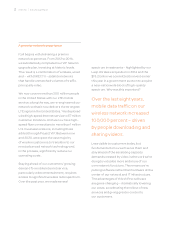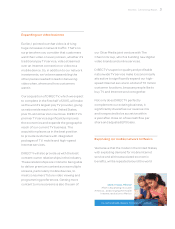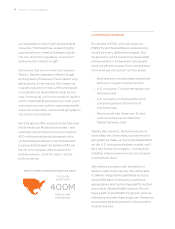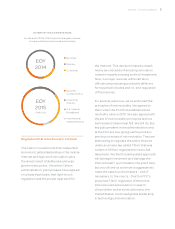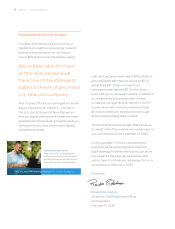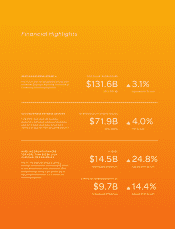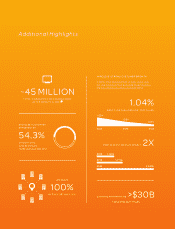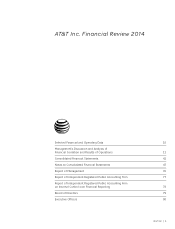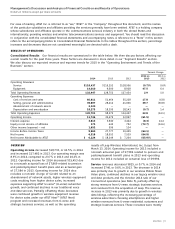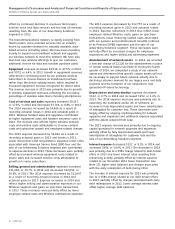AT&T Wireless 2014 Annual Report Download - page 4
Download and view the complete annual report
Please find page 4 of the 2014 AT&T Wireless annual report below. You can navigate through the pages in the report by either clicking on the pages listed below, or by using the keyword search tool below to find specific information within the annual report.
A premier network experience
It all begins with delivering a premier
network experience. From 2012 to 2014,
we substantially completed our VIP network
upgrade plan, investing at historic levels.
The result is a combination of wireless, wired
and – with DIRECTV – satellite networks
that handle unmatched volumes of traffic,
principally video.
We now cover more than 300 million people
in the United States with our LTE mobile
service; along the way, we re-engineered our
network so that it now delivers the strongest
LTE signal in the United States.1 We deployed
wired high-speed Internet service to 57 million
customer locations. And we now have high-
speed fiber connections to more than 1 million
U.S. business locations, including those
added through Project VIP. Between now
and 2020, we expect the vast majority
of wireline customers to transition to our
most advanced network technology and,
in the process, significantly reduce our
operating costs.
Staying ahead of our customers’ growing
demand for mobile Internet service,
particularly video entertainment, requires
access to significant wireless radio spectrum.
Over the past year, we made several
spectrum investments – highlighted by our
Leap Wireless acquisition in 2014 and the
$18.2 billion we committed to invest earlier
this year in a government auction to acquire
a near-nationwide block of high-quality
spectrum. Why was this important?
Over the last eight years,
mobile data traffic on our
wireless network increased
100,000 percent – driven
by people downloading and
sharing videos.
Less visible to customers today, but
fundamental to how we’ll serve them and
stay ahead of the escalating capacity
demands created by video, is the work we’re
doing to virtualize more and more of our
core network functions. This means we’re
putting software rather than hardware at the
center of our network and IT infrastructure.
The advantages of this shift to software
are game changing – dramatically lowering
our costs, accelerating the rollout of new
services and giving greater control to
our customers.
AT&T INC.
|
2014 Annual Report2




